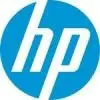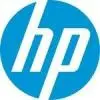TrustRadius Insights
Difficult Navigation: Some users have expressed frustration with the HPE support page, stating that it is hard to navigate when searching …


HPE ProLiant DL is a rack server, from Hewlett-Packard Enterprise.
Products that are considered exceptional by their customers based on a variety of criteria win TrustRadius awards. Learn more about the types of TrustRadius awards to make the best purchase decision. More about TrustRadius Awards
| Operating Systems | Unspecified |
|---|---|
| Mobile Application | No |

